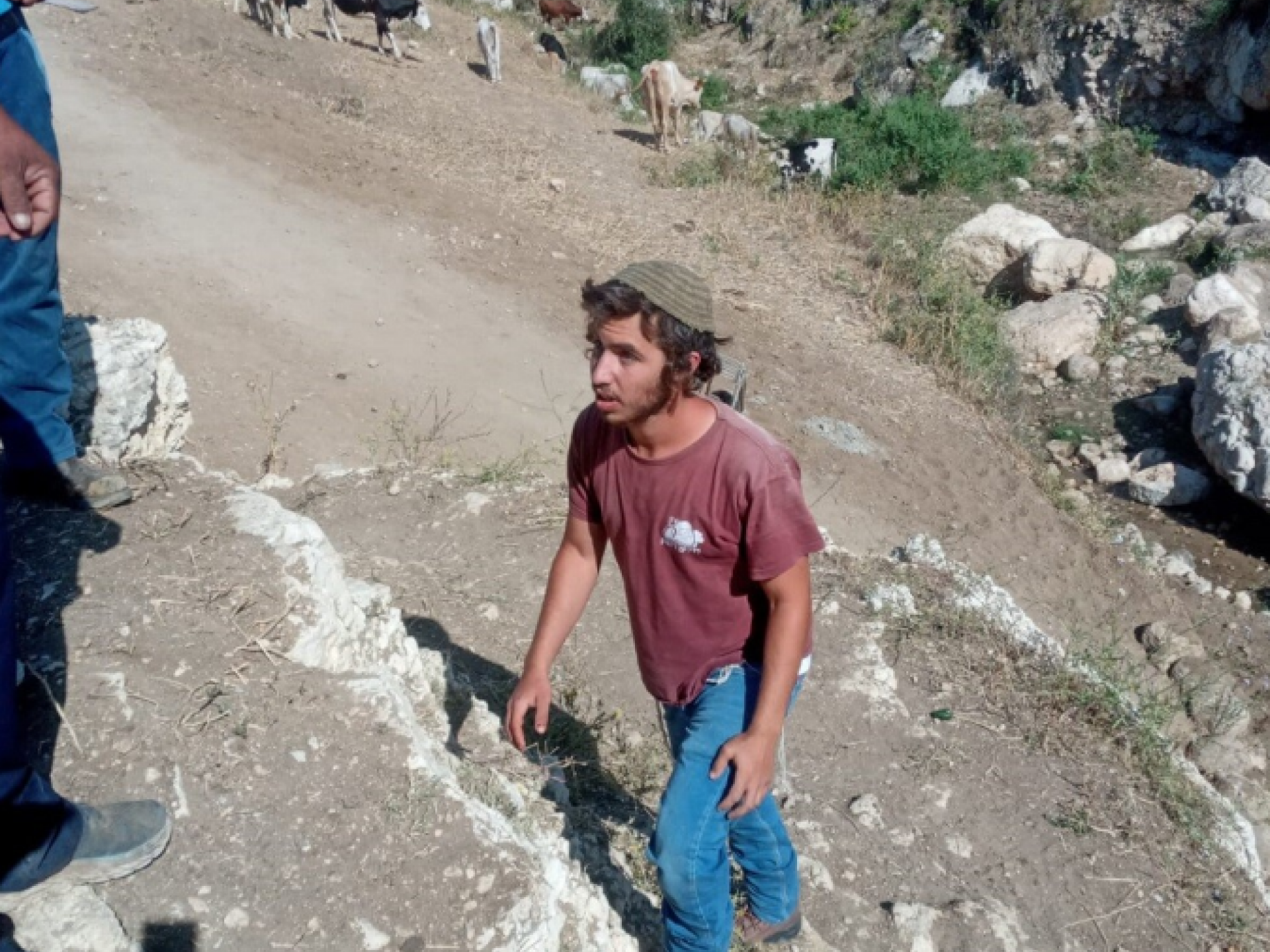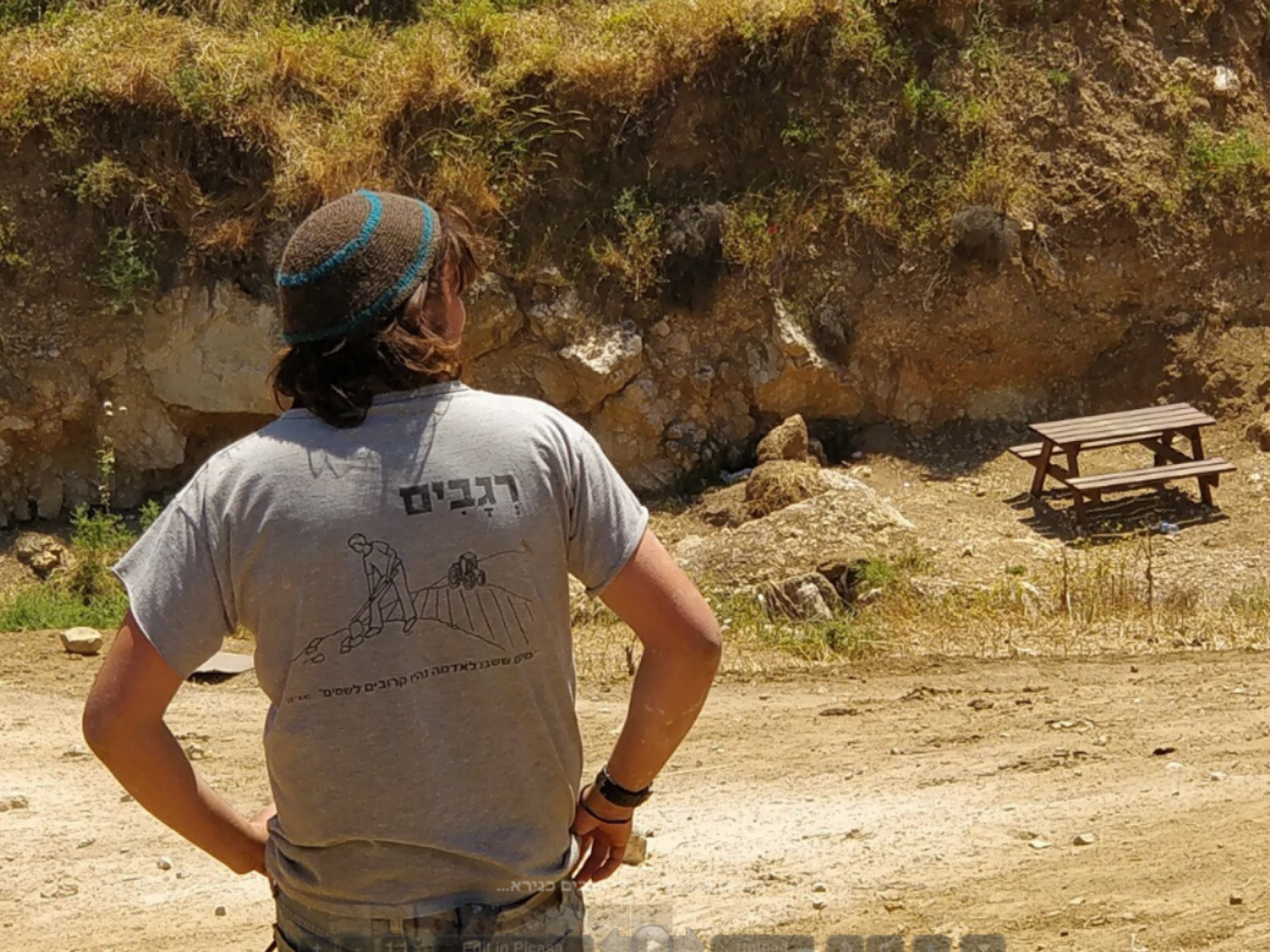Jordan Valley: And you drew water in tears
11 a.m. – grazing grounds west of Fasail. Silence. Not a single Palestinian nor Jewish shepherd in sight. The Palestinians must have gone grazing and returned early because of the Ramadan fast. The Jewish settler-colony might be busy preparing for Independence Day, and perhaps there is no point in his coming when there are no Palestinians around to molest. On our way to the grazing grounds we surround the settler-colony of Tomer. We have noticed that a new, high and shiny barbed wire fence surrounds it.
On our way north we entered Toblan site – the garbage dump into which all of the State of Israel pours its garbage. The stench is stunning. Obviously this dump does not only produce organic compost – there are plenty of metals, glass and much plastic in every direction. On top thousands of storks scavenge. We wondered whether they were on their way north or tempted to remain here, where food is always abundant even in the harsh summer conditions.
Along road 90 we see date-tree groves, most of them designated as “belonging” to very distant settler-colonies located near road 578. Not only have the settler-colonies appropriated the lands nearby, they do so with more lands to the east, along the border, tool.
In the settler-colony of Shadmot Mechola is a huge field growing thousands of solar panels. It’s a nice initiative, especially when the state in fact provides them gratis as much land as they wish for farming, but at least the panels do not drink up all the water of the region.
En Sukut
The charming spring in the northern Palestinian Jordan Valley to which we used to bring Palestinian mothers and children for a fun day, has been closed off behind a 2-meter fence with a gate on every side. The is indeed open, and a shepherd we met nearby said that when he comes there to water his sheep the gates are usually open, but there is a reason for the fence and gates, and presumably at some point they will be locked. The spring is public, and both Palestinians and Israelis enjoy wading in its water. Who has enabled the settler-colonists to close off and appropriate this charming place?
are usually open, but there is a reason for the fence and gates, and presumably at some point they will be locked. The spring is public, and both Palestinians and Israelis enjoy wading in its water. Who has enabled the settler-colonists to close off and appropriate this charming place?
The shepherd we met in a harvested field sat on a water tank, covered his face and kept his distance. Corona. We asked him who owned this field – he said that the field used to belong to Palestinians but Israelis have taken over and are tending it. We had heard about this from Attorney Tawfiq Jabareen, that the Palestinians demanded that their field be returned to them, and won their case in the Israeli Supreme Court. But the Jews get here early in the fall and forcefully prevent the Palestinians from tending their land, while they themselves tend and steal this field.
The pool at En Al Hilwa
Five settler-colonist boys wandering at the site tried to prevent us from photographing. Mahdi’s brothers were there too, and said that the settler-colonists enable them to bring their cattle to the measly dripping water under the pool, at 3 p.m. We drove to look for the second pool built at Umm Jamal across the road, and couldn’t find it.
We visited Bourhan and Ashraf. The latter told us about his wife Rima’s difficult life. She gets up at 4 .m., prays, eats and drinks something before dawn, prepares breakfast for her husband, milks the goats, makes cheese, washes clothes, washes the cheesecloth, cleans up, feeds the little children, washes them, and prepares food for the festive Iftar dinner. And she only has 4 children… How does a mother of 9 hang in there?
We planned to join Rabbi Arik Asherman in the afternoon, accompanying shepherds in the fields around the Tayibe junction and Deir Jarayer. The settler-colonists take their flocks into the Palestinians’ fended fields and eat up the crops. These are violent settler-colonists. Last week they vehemently clubbed the rabbi. We reached the junction and did not see settler-colonists. Since Arik wasn’t there, we drove to Deir Jarayer to see whether the settler-colonists of the Maale Ahuviya outpost were taking their flocks into the fields there. We did not see anyone there either. But we did see that the settler-colonists have returned to rebuilt the illegal outpost that was dismantled by the army a week ago. The outpost is located right on the main access track to Deir Jarayer, and we feared that the settler-colonists would not hesitate the three elderly women.


